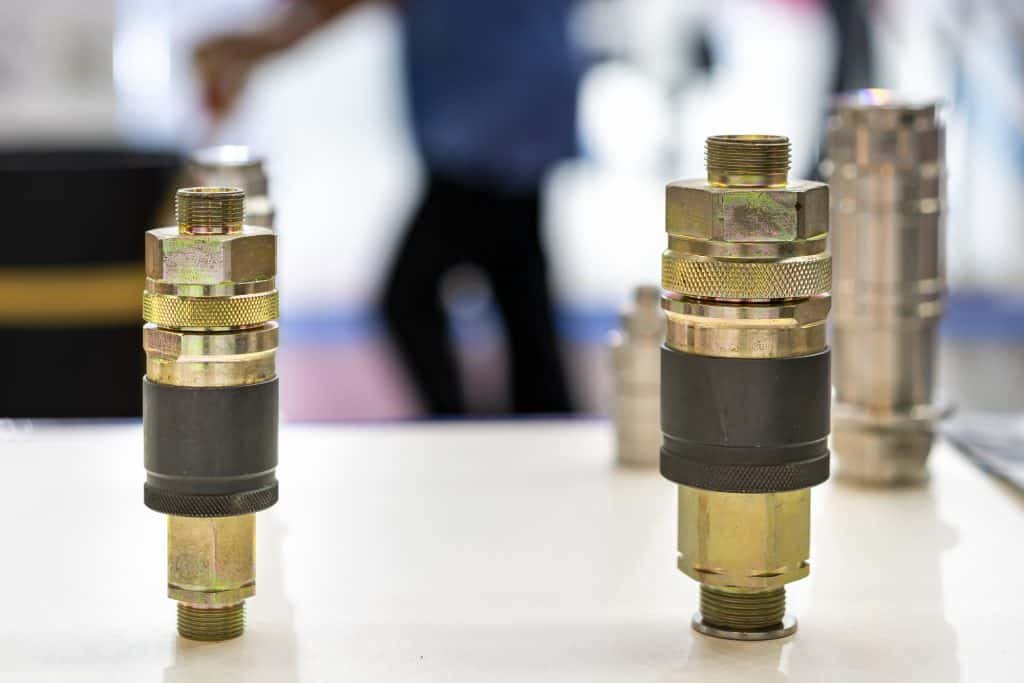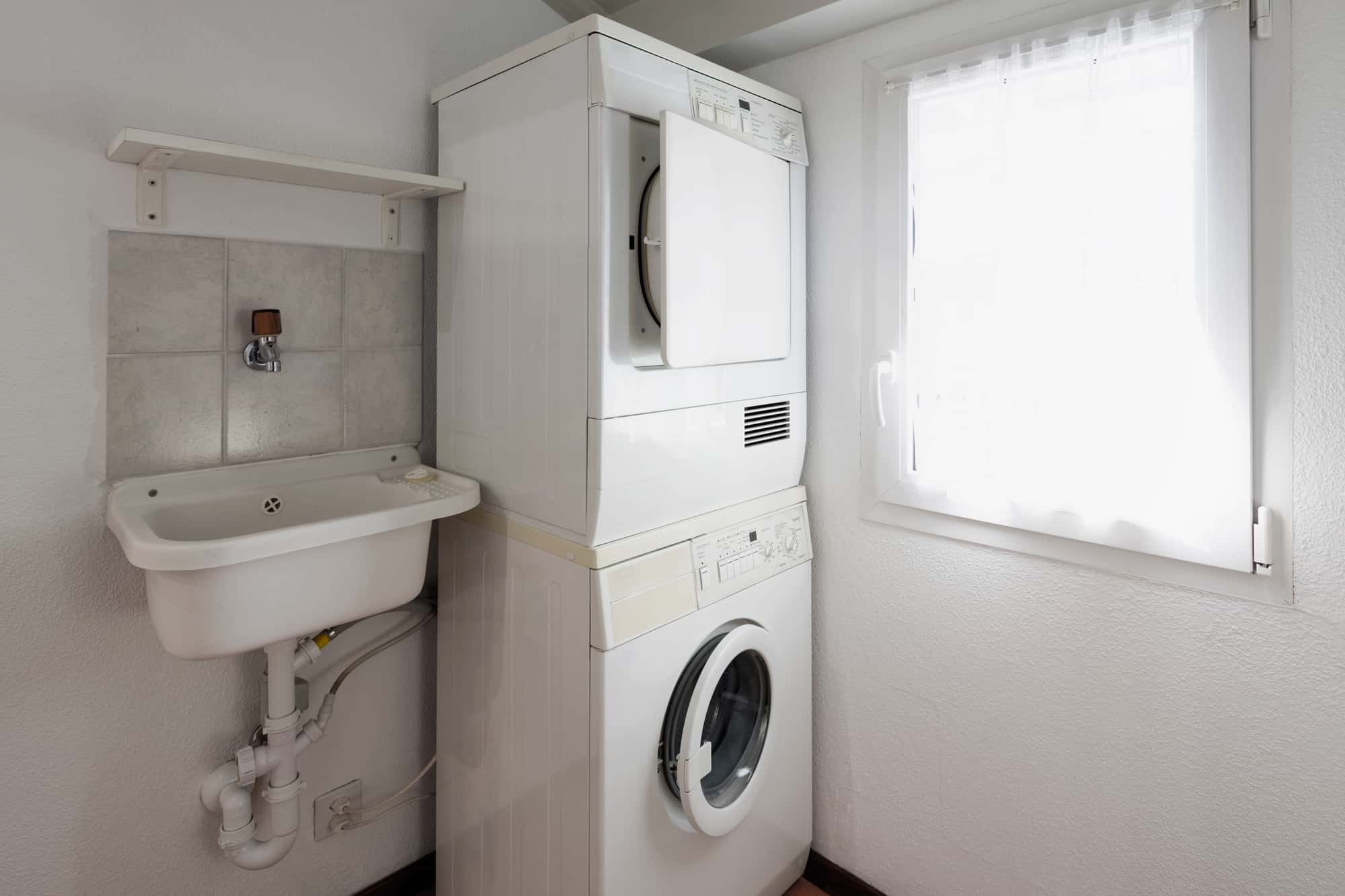When setting up your plumbing system, it’s essential to consider whether your washing machine and sink can share the same drain or need separate drains. Here’s what you need to know to make an informed decision.
A washer and a sink can share a drain. However, this setup is not recommended. The washer will constantly put water into the drain, while the sink will constantly take water out. Over time, this will cause a build-up of debris in the pipe and eventually lead to a clog.
This article will describe how to determine if you can add another fixture to your sink or washer drain pipes and give you some tips on what you can do in certain situations if you have already added another fixture to your drainage pipes.
Can a Washing Machine and Sink Share the Same Drain?
Whether your washing machine and sink can share the same drain will depend on the type of plumbing setup you have in your home, but it almost always comes down to the size of your tub drain. If your tub drain is 3 inches (7.62 cm) in diameter, it can also accommodate a sink.
When it comes to plumbing, there are a few things that you need to take into account. The first is the type of drain that you have. Sinks and washing machines use different types of drains.
If you have a standard sink, you won’t be able to connect a washer and dryer to it because their drains are too different.
Sinks typically use a “U”-shaped pipe, while washers and dryers use an “L”-shaped pipe. These different shapes can cause problems when the two devices are installed in the same drain.

Most sinks and washers can use standard 1-inch or 2-inch pipes, but some washers and dryers require larger pipes. If the pipes aren’t large enough, water flow will be restricted and the machines may not work properly.
To figure out how much water will go down your drain during a load of laundry, multiply the cubic feet of your washing machine by two.
For example, let’s say your washing machine holds 6 cubic feet (0.17 cubic meter) of water. That means 6 x 2 = 12 cubic feet (0.34 cubic meter) are going down your drain for every load. So if there’s room for both appliances to coexist comfortably in your space, you should be fine.
However, even if you have a laundry room with a sink, it’s still not a good idea to combine them. The washing machine will clog the sink drain and vice versa, causing problems for both appliances—and your plumbing bill.
The other problem with combining washers and sinks is that they need their own water supplies. The laundry machine needs more water than the kitchen faucet, which means installing an additional line from the wall or floor of your house directly into its base.
This also means that there has to be another vent pipe attached between them (or somewhere else in your home).
How To Attach a Washer Drain Hose to a Utility Sink
The first step to attaching your washer drain hose to a utility sink is to use a washer hose adapter. A washer hose adapter is a small plastic piece that attaches to the end of your washing machine drain hose and allows it to fit into a utility sink’s drain hole. (source: Pressure Washer)

However, many washers have different types of hoses, so it’s essential that you choose one compatible with your plumbing setup. If you buy a front-loading washer, check that it has either 138-inch (35 mm) or 112-inch (38 mm) tubing; any other size won’t work.
Make sure that whatever hose size you choose fits into both your sink pipe and laundry outlet pipe.
A washer hose adapter usually comes in two parts: one-half screws into your washing machine, and the other half screws into your utility sink. You simply tighten both halves of the adapter together until they form a tight seal around both hoses.
If there is any gap between them when they are secured, water will leak out as soon as you turn on either faucet —and then again every time you run another load of laundry!
To test whether everything is working correctly, fill up an empty bucket with water and check for any signs of leaks at the connection between the two pipes.
How To Connect a Washing Machine Drain to the Kitchen Sink
It’s possible to connect these two appliances if you have a double-bowl sink. You’ll probably have to do some reconfiguring of plumbing lines, but it is possible to combine both appliances’ drains together.
The big issue with connecting washing machine drains to kitchen sinks is that most dishwashers run on less pressure than washing machines. That means water may not drain from your washer fast enough for your dishes.
Always consult an expert if you plan on doing any DIY plumbing projects like these. (source: HowStuffWorks)
Before connecting your washing machine’s drain to your kitchen sink, you’ll need to ensure that the sink has a filter. If it doesn’t, you’ll have to install one. The filter will help prevent any small objects from entering your plumbing system and causing problems in the future.

Next, remove the plug from your washing machine drain hose and connect it directly to the sink drain using a screwdriver or wrench (depending on what kind of hose clamp you have).
Once this is done, apply an O-ring washer over each end so that there is no leakage when putting everything back together again later.
- It’s important to keep in mind that it’s never a good idea to use the same drain for a washer and kitchen sink. The reason for this is twofold:
- First, water from your sink will flood into your washer whenever you open it.
- Second, you could damage the plumbing in both your kitchen and laundry area.
You can use these fixtures at different times during the day, so there is no reason to share a drain between them. Instead, install separate drains to ensure optimal function in both areas of your home.
But if neither of these workarounds is an option for you, there are preventive measures available to avoid backflow.
So, can a washer and sink share a drain line? Yes, you can use a single drain for both your washing machine hose and your kitchen sink, but it’s something that we don’t recommend.

